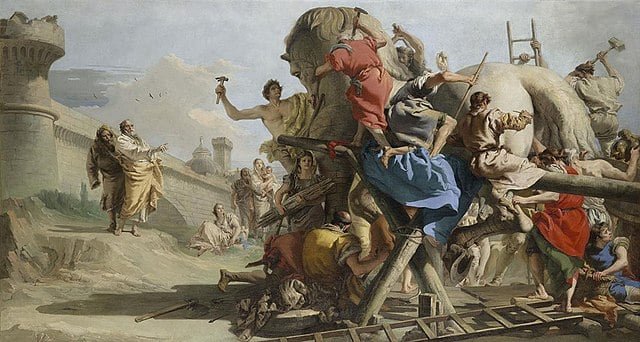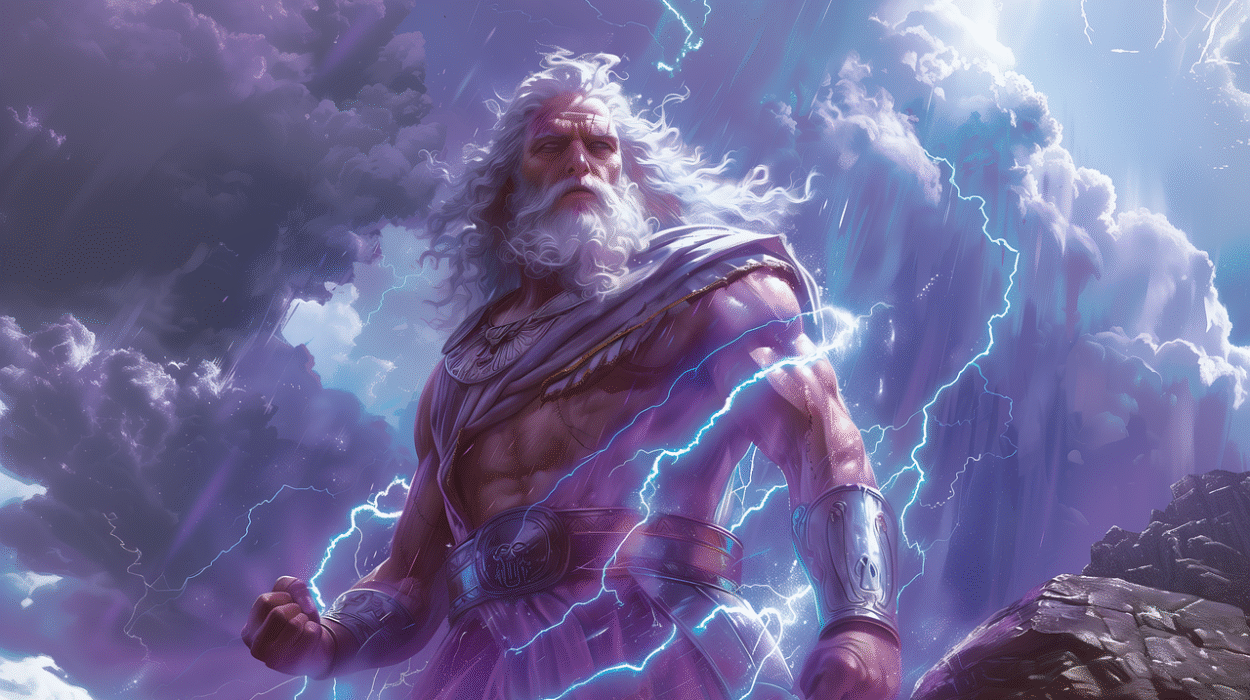Among the myths that ancient Greece gave to the world, few stories pulse with such emotional resonance, natural symbolism, and enduring cultural impact as the tale of Persephone’s abduction and the cycle of the seasons. It is a myth at once tragic and hopeful, tender and violent, rooted in the soil yet stretching toward the divine. To read it is to read not only about gods and goddesses but about human existence itself: the inevitability of loss, the promise of return, and the eternal rhythm of change that governs both the heavens and the earth.
The myth of Persephone is not just an old tale buried in the past. It lives on in every spring flower, every autumn harvest, every barren field of winter. It reminds us that mythology was never only about storytelling—it was about making sense of the great mysteries of existence, the rising and falling of the sun, the greening and dying of fields, the endless turning of life into death and death into life again.
In the heart of this myth is a young goddess, Persephone, whose fate ties the fertility of the earth to the hidden world of the dead. Her abduction by Hades, her mother’s grief, and her cyclical return to the world of the living form the foundation of a cosmic drama that still speaks to us today.
The Maiden of Meadows and the Shadow of Desire
Persephone, before her fateful abduction, was the maiden of spring, daughter of Demeter, goddess of the harvest and fertility. In Homeric hymns and classical poetry, she is depicted as radiant, innocent, and full of joy, gathering flowers in sunlit meadows with her companions, the daughters of Oceanus. She symbolized youthful promise, the very embodiment of blooming life.
But her beauty and light did not escape the gaze of the underworld. Hades, lord of the dead, longed for a queen to rule beside him in the shadowy depths. His heart set upon Persephone, and though the underworld was his domain, he could not claim her without consent. Knowing this, he sought the approval of his brother Zeus, king of the gods, who secretly agreed to the union.
One day, as Persephone wandered through fields of narcissus and lilies, the earth suddenly split open. From the chasm rose Hades in his chariot of black horses. He seized her, carried her down into the abyss, and the meadow closed as if nothing had happened. Her cries for help echoed, but only Hecate, goddess of crossroads, and Helios, the all-seeing sun, witnessed the truth of her fate.
The abduction was not merely a theft of a maiden—it was the disruption of natural harmony. In Persephone’s descent, the cycles of life and death collided, and the balance of the cosmos was shaken.
Demeter’s Despair and the Barren Earth
When Demeter discovered her daughter was gone, grief consumed her. She wandered the earth disguised as a mortal woman, torch in hand, searching endlessly for her lost child. Her sorrow was not silent—it was world-changing.
Demeter abandoned her divine duties. Crops withered in the fields, seeds refused to sprout, livestock starved, and the earth grew barren. Humanity itself faced extinction under the weight of her grief. This was more than a mother’s mourning—it was the goddess of fertility withdrawing her gifts from the world.
The myth here conveys something profoundly human: the connection between emotional pain and the natural world. Demeter’s loss is every parent’s nightmare, but her despair becomes cosmic, transforming into famine and winter. The story makes visceral what agriculture-based societies in Greece understood deeply: the fertility of the earth is fragile, dependent on forces beyond human control, tied to mysteries of life and death.
The Bargain of the Gods
Eventually, Demeter’s anguish reached Olympus. Humanity’s survival was at stake, and without mortals to offer sacrifices, the gods themselves would suffer. Zeus, pressured by the crisis, sent Hermes, the messenger god, to the underworld to negotiate Persephone’s release.
But Hades was cunning. Before allowing Persephone to depart, he offered her a pomegranate. She ate a few seeds, sealing her bond to the underworld. In Greek thought, food was sacred—it symbolized belonging and obligation. By consuming the fruit of Hades’ realm, Persephone became tied to it forever.
The compromise that followed was both tragic and hopeful: Persephone would spend part of the year with her mother above the earth and part of the year with Hades below. Interpretations differ—some say six months, others four—but the meaning is clear. The cycle of her departure and return explains the rhythm of the seasons.
When Persephone returns each spring, Demeter rejoices, the fields bloom, and life surges back into the world. When Persephone descends to Hades in autumn, Demeter mourns, the earth grows cold, and winter blankets the land.
Thus, the myth becomes a grand metaphor for the cycles of growth and decay, fertility and barrenness, life and death.
Myth as Agricultural Truth
To understand the power of this story, we must place it within the context of ancient Greece. The Greeks were an agricultural people whose survival depended on the success of crops and harvests. Their very existence was bound to the seasonal changes that governed planting and reaping.
The myth of Persephone is, at its core, an agricultural allegory. It encodes the yearly cycle of sowing and harvest into divine narrative. The descent of Persephone mirrors the burial of seeds into the dark soil; her return mirrors the sprouting of crops in spring. The barrenness of winter reflects Demeter’s sorrow, while the fertility of summer reflects her joy.
By linking cosmic forces to human survival, the myth gave emotional and spiritual meaning to the natural world. It reassured the Greeks that death and decay were not final but part of a larger cycle of renewal. In Persephone’s dual existence—part in the light, part in the dark—they saw mirrored the fate of all living things.
Persephone and the Underworld
Beyond the agricultural symbolism, the myth of Persephone carries profound reflections on death and the afterlife. As queen of the underworld, Persephone is no longer just the innocent maiden of flowers. She becomes a bridge between two realms, both a goddess of fertility and a goddess of death.
Her duality made her one of the most complex figures in Greek religion. She was invoked both in times of planting and in funerary rituals. She embodied the truth that life and death are not opposites but intimately connected, two halves of the same whole.
This dual role made her central to the Eleusinian Mysteries, one of the most important religious rites in ancient Greece. In secret ceremonies, initiates honored Demeter and Persephone, seeking spiritual insight into the mysteries of life, death, and rebirth. Though little is known of these rituals, ancient writers hint that they offered hope of a blessed afterlife—echoing Persephone’s return from the underworld as a promise that death is not the end.
The Psychological Dimension of the Myth
While the myth is deeply agricultural and religious, it also resonates with psychological themes that still move us today. Persephone’s abduction can be read as a story of transformation—from innocence to experience, from child to adult, from dependence to autonomy.
In this sense, Persephone’s descent is a metaphor for rites of passage. Her time in the underworld symbolizes the dark struggles we all face—the losses, traumas, and transformations that shape us. Her return each year embodies resilience, rebirth, and the possibility of renewal.
For Demeter, the story is about grief, but also about learning to let go, to accept that children grow and change, and that separation is part of love. For Persephone, it is about claiming her identity—not only as a daughter but as a queen in her own right.
This human dimension is part of why the myth endures. It is not just about gods—it is about us.
Cultural Echoes Through Time
The myth of Persephone has resonated through centuries of art, literature, and thought. Ancient vase paintings show the abduction in vivid imagery: Hades’ chariot, Persephone’s struggling form, Demeter’s torch-lit search. Poets like Ovid retold the story in Metamorphoses, shaping it for Roman audiences.
In later centuries, Renaissance painters depicted Persephone’s beauty and sorrow, while Romantic poets found in her myth a reflection of nature’s cycles and human longing. Today, her story is retold in novels, plays, operas, and even modern musicals. Persephone remains a symbol of transformation, resilience, and the eternal return of life.
Beyond art, the myth shaped philosophy and religion. Thinkers from Plato to Jung drew on Persephone as a symbol of the soul’s journey. In Jungian psychology, her descent mirrors the “shadow journey” of the unconscious. In ecofeminism, she embodies the deep connection between women, nature, and cycles of renewal.
The Scientific Layer Beneath the Myth
Though Persephone belongs to myth, her story encodes real scientific observations. Ancient Greeks used myth to explain what they saw in the natural world, and the tale of seasonal change reflects genuine astronomical and ecological rhythms.
The cycle of seasons is governed by the tilt of Earth’s axis and its orbit around the sun. As Earth tilts toward or away from the sun, days grow longer or shorter, temperatures rise or fall, and ecosystems shift accordingly. For ancient peoples, these astronomical truths were invisible, but their effects were undeniable.
The myth of Persephone translated these cosmic mechanics into human terms. Instead of axial tilt, the Greeks spoke of a goddess’s sorrow. Instead of orbital dynamics, they spoke of a daughter’s return. In this way, myth and science are not opposed but complementary—myth offering meaning, science offering mechanism.
Even today, as we understand the physics of the seasons, Persephone’s story enriches that knowledge with metaphor and poetry, reminding us that science explains the how, but myth helps us feel the why.
Persephone in the Modern World
Why does Persephone’s myth still matter? Because we are still bound to the rhythms it describes. We still live in cycles of light and darkness, growth and decay, loss and return. We still seek meaning in the transitions that mark our lives.
In times of ecological crisis, her story speaks with new urgency. The fertility of the earth is fragile, dependent not only on divine moods but on human choices. Demeter’s barren world is no longer myth—it is the reality of climate change, soil exhaustion, and species extinction. The lesson is clear: when the balance between life and death is broken, all of humanity suffers.
Persephone also remains a symbol of resilience for individuals. Her abduction is a metaphor for trauma, but her return is a reminder of healing and renewal. She teaches us that descent into darkness does not mean permanence—that spring always follows winter, that loss can give way to growth.
The Eternal Return
At its core, the myth of Persephone is about cycles: the cycle of the seasons, the cycle of life and death, the cycle of loss and reunion. It is a myth of eternal return, reminding us that endings are never final but part of a larger pattern of renewal.
Every seed that falls into the soil carries Persephone’s story. Every spring blossom is her return. Every cold winter field is Demeter’s sorrow. Through myth, the Greeks gave voice to a universal truth: that life is not linear but cyclical, forever dying, forever reborn.
Persephone’s abduction is not only the story of a maiden stolen by a god—it is the story of the Earth itself, of humanity’s relationship with nature, and of the deepest rhythms of existence. It is as much a scientific truth as a poetic one, as much a cosmic law as a tale of gods.
To tell it is to remember that we, too, live within these cycles, and that even in our darkest winters, spring waits patiently to return.






